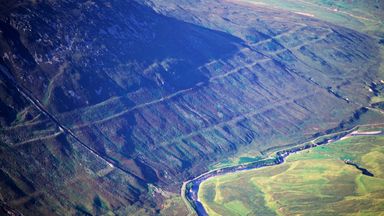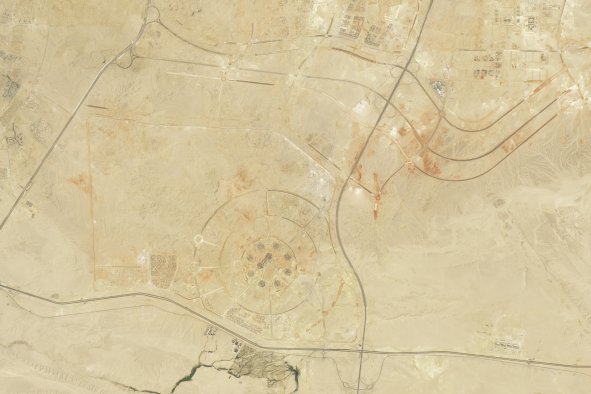A submerged prehistoric structure has been found to be far older than once thought, a study reports.
The findings shed new light on the early human settlement of the Balearic Islands in the western Mediterranean Sea—an archipelago that includes Mallorca, Menorca and Ibiza, which are now all part of Spain.
Reconstructing the early human colonization of the Balearics has long been challenging, largely thanks to limited archaeological evidence.
For the latest study, published in the journal Communications Earth & Environment, researchers examined a 25-foot-long prehistoric "bridge" structure now submerged inside Genovesa Cave, located on the coast of Mallorca.
Previous research had indicated, tentatively, that the structure was built around 3,500-3,000 years ago, thanks to pottery found in a chamber that the bridge led to.
But in the latest work, study lead author Bogdan Onac (with the University of South Florida) and colleagues dated the construction of the bridge to between around 6,000 and 5,600 years ago.
"This provides evidence for early human presence on the island dating at least 5,600 and possibly beyond around 6,000 years ago," the authors wrote in the study.
The latest findings challenge the current scientific consensus, which holds that the earliest human settlement on the island occurred around 4,400 years ago. (Some prior research had suggested human presence as far back as 9,000 years ago, but inconsistencies and poor preservation of the radiocarbon dated material led to doubt being cast on these findings.)
The authors of the latest study came to their conclusions after analyzing mineral formations on the bridge and the elevation of a distinctive coloration band near its top. The cave has passages that are now flooded thanks to rising sea levels.
The mineral formations and the coloration band served as proxies for precisely tracking historical changes in sea level and enabled the researchers to constrain the dates of the bridge's construction.
The findings provide evidence indicating that humans settled on the island earlier than the current scientific consensus suggests.
"This research underscores the importance of interdisciplinary collaboration in uncovering historical truths and advancing our understanding of human history," Onac said in the press release.
Do you have a tip on a science story that Newsweek should be covering? Do you have a question about archaeology? Let us know via science@newsweek.com.
References
Onac, B. P., Polyak, V. J., Mitrovica, J. X., Ginés, J., Gràcia, F., Fornós, J. J., Ginés, A., & Asmerom, Y. (2024). Submerged bridge constructed at least 5600 years ago indicates early human arrival in Mallorca, Spain. Communications Earth & Environment, 5(1), 1–6. https://doi.org/10.1038/s43247-024-01584-4
Disclaimer: The copyright of this article belongs to the original author. Reposting this article is solely for the purpose of information dissemination and does not constitute any investment advice. If there is any infringement, please contact us immediately. We will make corrections or deletions as necessary. Thank you.



